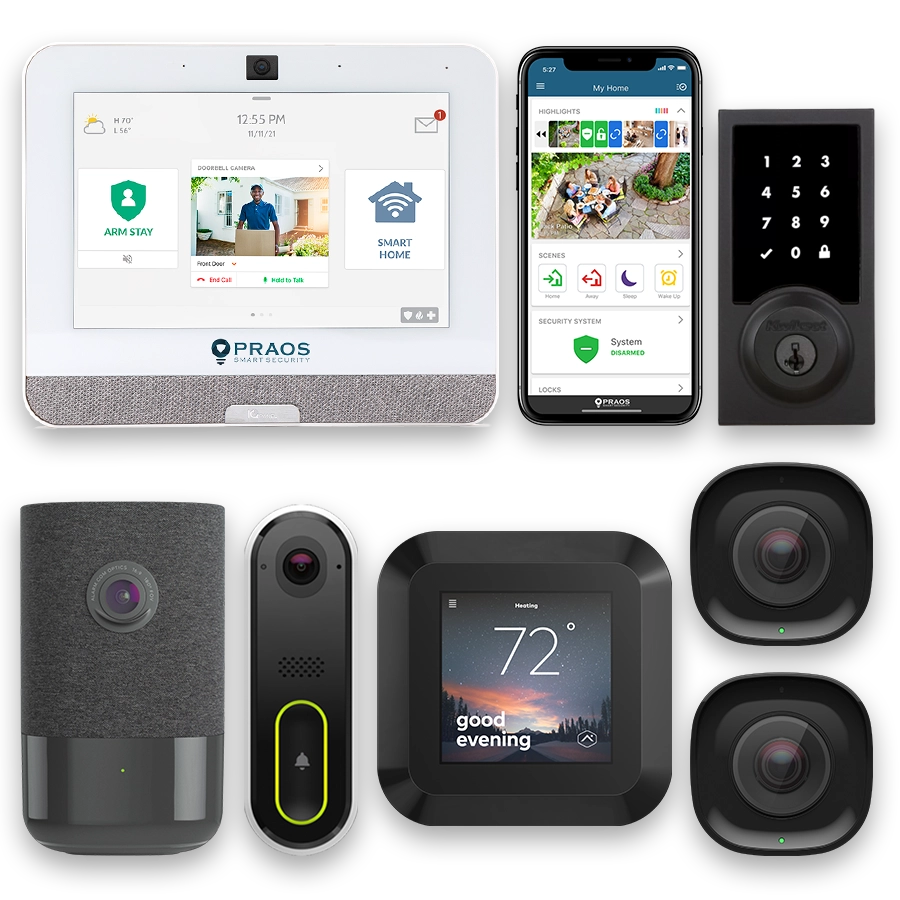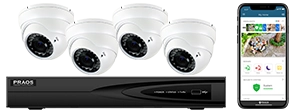Introduction to Home Automation Technologies
Home automation technologies encompass a variety of devices and systems that allow you to control different aspects of your home environment remotely and automatically. These technologies can significantly enhance your daily routine by making tasks more efficient, saving energy, and providing greater convenience and security.
At the core of home automation are smart devices. These are products that can communicate over a network and be controlled via a smartphone, tablet, or computer. Some common examples include smart lights, thermostats, security cameras, and voice assistants. These devices often integrate with each other, creating a cohesive and manageable home environment.
Home automation relies on several key technologies to function effectively:
- Internet of Things (IoT): This technology allows devices to connect and communicate over the internet, providing remote access and control.
- Wireless Communication: Protocols such as Wi-Fi, Bluetooth, Zigbee, and Z-Wave enable seamless connectivity between devices.
- Artificial Intelligence (AI): AI-driven features can learn user preferences and automate tasks accordingly.
- Cloud Computing: This technology facilitates data storage and processing, enabling advanced functionalities and remote access.
The table below outlines some key features and benefits of various home automation technologies:
| Technology | Benefits |
|---|---|
| Smart Lighting | Energy savings, mood setting, and remote control |
| Automated Climate Control | Optimized temperature settings, energy efficiency |
| Home Security Systems | Enhanced safety, remote monitoring, and alerts |
| Voice Assistants | Convenient control, hands-free operation, and integration with other devices |
Overall, home automation technologies provide numerous advantages that can streamline and enhance your daily life. By understanding and leveraging these technologies, you can create a more efficient, comfortable, and secure home environment.
Smart Lighting Solutions for Your Home
Smart lighting solutions offer numerous benefits that can enhance your daily routine by increasing convenience, improving energy efficiency, and boosting home security. By using smart lighting systems, you can control the lighting in your home through various methods such as mobile apps, voice commands, or automated schedules.
One of the primary advantages of smart lighting is the ability to automate lighting schedules. You can configure lights to turn on or off at specific times of the day, which can be particularly useful for waking up or going to bed. For instance, setting your bedroom lights to gradually brighten in the morning can help you wake up more naturally, while dimming lights in the evening can signal that it’s time to wind down.
Additionally, smart lighting systems often include motion sensors that can detect when someone enters or leaves a room. These sensors can automatically adjust the lighting based on occupancy, ensuring that lights are only on when needed. This not only provides convenience but also reduces electricity consumption by preventing lights from being left on in unoccupied spaces.
Energy efficiency is another significant benefit of smart lighting. Many smart bulbs use LED technology, which consumes less energy compared to traditional incandescent bulbs. Furthermore, smart lighting systems can be integrated with other smart home devices, such as thermostats, to create a comprehensive energy management system. For example, lights can be programmed to turn off when the home is set to an “away” mode, ensuring no energy is wasted.
Security is also enhanced with smart lighting solutions. Automated lighting schedules can give the impression that someone is home even when the house is empty, deterring potential intruders. Additionally, many smart lighting systems can be integrated with home security systems to trigger lights in response to specific events, such as when a security camera detects motion or a door sensor is activated.
For implementation, there are numerous smart lighting products available in the market, ranging from smart bulbs that can be screwed into existing fixtures to full-fledged smart lighting systems that require installation by a professional. Popular smart lighting systems include brands such as Philips Hue, LIFX, and Sengled. These systems often come with a central hub that connects to your home Wi-Fi network and allows you to control the lighting through a dedicated app or a voice assistant.
Overall, smart lighting solutions provide a range of benefits that can simplify and enhance your daily routine. By automating lighting based on your schedule, utilizing energy-efficient LED bulbs, and integrating with home security systems, you can create a more convenient, efficient, and secure living environment.
Automated Climate Control for Comfort and Efficiency
Automated climate control systems are a critical component of modern home automation. These systems maintain optimal indoor conditions by regulating temperature, humidity, and air quality, ensuring a comfortable living environment while maximizing energy efficiency.
Programmable Thermostats
One of the most widely adopted technologies in automated climate control is the programmable thermostat. These devices allow homeowners to set specific temperature schedules based on their daily routines. For instance, users can set lower temperatures when they are away from home and higher temperatures when they are expected to return, thereby saving energy and reducing utility bills.
Popular programmable thermostats, such as those from Honeywell and Emerson, enable users to create multiple schedules that automatically adjust according to the time of day and season. These thermostats often include features like:
- Remote access via smartphone applications
- Energy usage reports and recommendations
- Compatibility with voice assistants
- Integration with other smart home devices
Smart Thermostats
Taking programmable thermostats a step further, smart thermostats incorporate advanced algorithms and sensors to learn homeowners’ preferences and adjust settings autonomously. Devices like the Nest Learning Thermostat and the ecobee SmartThermostat offer functions such as:
- Learning temperature preferences over time
- Presence detection to adjust settings based on occupancy
- Geofencing to adjust temperatures when users are arriving or leaving home
- Smart home integrations and compatibility with various ecosystems
Humidity Control
Proper humidity levels are essential for maintaining comfort and protecting home materials. Automated climate systems can integrate with humidifiers and dehumidifiers to maintain ideal humidity levels. For instance, a smart thermostat can be connected to a whole-house humidifier to ensure consistent indoor humidity, thereby improving air quality and reducing potential damage to wooden furniture and flooring.
Air Quality Management
Air quality management is another vital aspect of automated climate control. Modern systems can monitor and improve indoor air quality by incorporating air purifiers and ventilation systems. Many smart thermostats also include air quality sensors that detect levels of pollutants like volatile organic compounds (VOCs) and particulate matter (PM2.5). When poor air quality is detected, these systems can automatically activate air purifiers or adjust ventilation settings to introduce fresh air into the home.
Energy Efficiency
Automated climate control not only enhances comfort but also boosts energy efficiency. Features like adaptive learning, occupancy sensing, and remote control ensure that heating and cooling systems operate only when needed. Additionally, many smart climate devices provide detailed energy usage reports, helping homeowners understand their consumption patterns and identify opportunities for further energy savings.
In conclusion, automated climate control systems offer both comfort and efficiency by leveraging advanced technologies and integrating seamlessly with other smart home devices. Whether through programmable thermostats, smart thermostats, humidity control, air quality management, or energy efficiency features, these systems play a vital role in enhancing the overall functionality of a smart home.
Enhancing Security with Smart Home Devices
Home automation can significantly enhance home security, offering a range of devices designed to protect your home and provide peace of mind. These technologies not only deter potential intruders but also help you monitor your property in real-time, even when you’re not there.
Types of Smart Security Devices
Various smart security devices are available to enhance your home’s safety:
- Smart Cameras: These cameras can stream live footage directly to your smartphone, allowing you to monitor your home from anywhere. They often come with motion detection, night vision, and two-way audio features.
- Smart Locks: Smart locks allow you to lock or unlock your doors remotely using a smartphone app. They can also be set to automatically lock or unlock at specific times or when certain conditions are met.
- Smart Alarms: These alarms can be integrated with other smart devices and triggered by motion sensors or door/window sensors. They often send instant alerts to your mobile device.
- Smart Doorbells: Equipped with cameras and two-way audio, smart doorbells let you see and communicate with visitors via your smartphone.
Benefits of Smart Security Devices
Implementing smart security devices offers several benefits:
- Remote Monitoring: View real-time video feeds and receive alerts on suspicious activities directly on your smartphone.
- Increased Deterrence: Visible cameras and signs of security systems can deter potential intruders.
- Convenience: Remote locking/unlocking and real-time communication with visitors add layers of convenience.
- Integration: Smart security devices can often be integrated with other smart home systems for comprehensive control.
Popular Smart Security Devices
| Device | Description |
|---|---|
| Nest Cam | Offers 24/7 livestreaming, motion and sound alerts, and two-way communication. |
| August Smart Lock | Provides keyless entry, remote access, and integrations with smart assistants like Alexa and Google Assistant. |
| Ring Video Doorbell | Allows user to see and speak with visitors, features motion alerts and live view on demand. |
| SimpliSafe Home Security System | Offers a full range of security components, including cameras, sensors, and alarms, all controllable via a mobile app. |
Considerations for Installation
Before installing smart security devices, there are several factors to consider:
- Compatibility: Ensure the devices are compatible with your existing smart home systems and any third party services you intend to use.
- Internet Connection: A reliable internet connection is crucial for remote monitoring and control.
- Placement: Proper placement is essential for cameras and sensors to cover key areas effectively.
- Privacy: Be aware of privacy concerns and configure settings to safeguard your personal data.
Incorporating smart security devices into your home automation system can significantly enhance your home’s safety and your peace of mind, making it a valuable investment.
Voice Assistants and Their Role in Home Automation
Voice assistants have become an integral part of home automation systems, offering a hands-free way to control various smart devices and manage daily tasks. These virtual assistants, powered by artificial intelligence, can perform a wide range of functions that enhance convenience and streamline routines.
One of the primary roles of voice assistants in home automation is device control. By using voice commands, users can operate smart lights, thermostats, security cameras, and other connected devices. This feature allows for quick and efficient adjustments without the need to physically interact with a device or access a mobile app.
Another significant application of voice assistants is in managing schedules and reminders. Users can set alarms, reminders, and calendar events through simple voice commands. This capability helps to ensure that important tasks are not overlooked and that time is managed effectively.
Voice assistants also support various information retrieval tasks. They can provide answers to questions about weather forecasts, traffic conditions, news updates, and more. This immediate access to information can help users in planning their day and making informed decisions.
Additionally, voice assistants can facilitate communication within the household. For instance, some voice assistants offer features like intercom systems, allowing users to broadcast messages to different rooms or even send voice messages to family members when they are not at home.
Entertainment is another area where voice assistants excel. Users can control music streaming services, manage playlists, and adjust volume levels with their voice. Many voice assistants are compatible with smart TVs and other entertainment devices, enabling hands-free control of media playback and other functions.
Finally, voice assistants can integrate with various third party services and devices, enhancing their usability. For example, they can be connected to online shopping platforms, enabling users to add items to their shopping lists or place orders directly through voice commands.
The role of voice assistants in home automation continues to expand as technology advances and new features are developed. Their ability to facilitate seamless, voice-controlled interactions with smart home devices makes them a valuable component of modern home automation systems.
Integrating Entertainment Systems for a Seamless Experience
Integrating entertainment systems within a home automation setup can significantly enhance your daily routine by providing a seamless and enjoyable experience. Modern technologies allow various devices to work together, offering comprehensive control over media content and ensuring convenience.
One method of integrating entertainment systems is using smart TVs and streaming devices. Smart TVs come equipped with Wi-Fi and Ethernet capabilities, allowing direct access to various streaming services such as Netflix, Amazon Prime Video, and Disney+. These devices can be controlled through smartphone applications or voice assistants, enabling users to switch between services, control playback, and search content using voice commands.
Advantages of Smart TVs and Streaming Devices:
- Remote Control: Control your TV and streaming devices using voice commands or smartphone apps.
- Universal Search: Find content across multiple platforms quickly and efficiently.
- Content Recommendations: Receive personalized content suggestions based on your viewing history.
Another way to integrate entertainment automation is through multiroom audio systems. These systems, such as Sonos, Bose, and Amazon Echo, allow you to play music throughout your home. You can control these systems using a central hub or an app on your smartphone, and they often support popular music streaming services like Spotify, Apple Music, and Pandora.
Multi-Room Audio System Benefits:
- Sync Music: Play the same song in every room or choose different songs for different rooms.
- Voice Control: Use voice assistants to control playback and volume.
- Wi-Fi Connectivity: Stream high-quality audio without relying on Bluetooth or other short-range technologies.
For integrating these entertainment systems, a robust home network is essential. Modern Wi-Fi routers and mesh network systems can provide seamless coverage throughout the home, ensuring all devices stay connected and responsive.
Below is a table summarizing some popular devices used in home entertainment integration:
| Device | Features |
|---|---|
| Smart TV | Streaming apps, voice control, internet connectivity |
| Streaming Device | Access to streaming services, easy integration with TV |
| Multi-Room Audio System | Wi-Fi streaming, voice control, high-quality audio |
Incorporating entertainment systems into your home automation setup not only provides an enhanced media experience but also increases convenience and accessibility. With advancements in technology, having a connected and automated entertainment system is more achievable than ever.
Smart Appliances for Simplifying Daily Chores
Incorporating smart appliances into your home can significantly simplify daily chores. These devices are designed to be more efficient and user-friendly, reducing the time and effort required for mundane tasks. Smart home appliances are connected to your home network, allowing for seamless communication and control through mobile devices or voice assistants.
One key category of smart appliances is smart kitchen devices. For example, smart refrigerators can monitor the freshness of your food, create shopping lists, and even suggest recipes based on the ingredients you have available. These refrigerators often feature touchscreens and are integrated with voice assistants like Amazon Alexa or Google Assistant, enabling easy management of kitchen tasks.
Smart ovens and cooktops can be controlled remotely via smartphone apps, allowing users to preheat the oven on their way home from work. They also offer precise temperature control and cooking presets for various recipes, ensuring consistently good results with minimal effort. Some smart ovens can even scan barcodes on packaged foods and automatically set the appropriate cooking time and temperature.
Laundry tasks are also made easier with smart washing machines and dryers. These appliances can be scheduled to run at times that are convenient or energy-efficient, and they provide notifications when cycles are complete. Many models also offer features like automatic detergent dispensing and fabric care settings, which optimize the washing process based on the type of garments being cleaned.
Smart dishwashers are another transformative appliance that can be controlled via mobile apps. They often include sensors to detect the level of soil on dishes and adjust the washing cycle accordingly. Some models also have features like voice control and the ability to download custom wash cycles tailored to specific needs.
Home cleaning is facilitated by smart vacuum cleaners and robotic mops. These devices can navigate through home layouts, avoiding obstacles and cleaning designated areas as programmed. They can be scheduled to clean at specific times and can be controlled via smartphones to start cleaning cycles while you are away from home. Advanced models include features like mapping capabilities, allowing for more precise and efficient cleaning routes.
Incorporating these smart appliances into your daily routine not only saves time but also enhances the efficiency and effectiveness of household chores. By streamlining these tasks, smart appliances allow you to focus on other important aspects of your life, making day-to-day living more convenient and less stressful.
Future Trends in Home Automation and Emerging Technologies
Home automation continues to evolve at a rapid pace, introducing new and innovative technologies that promise to revolutionize how we interact with our living spaces. Looking ahead, several key trends and emerging technologies are poised to shape the future of home automation.
Artificial Intelligence (AI) and Machine Learning
AI and machine learning are becoming increasingly integral to home automation systems. These technologies enable devices to learn from user behaviors and preferences, resulting in more personalized and efficient automation. For instance, AI can optimize energy consumption by predicting when heating or cooling systems should be activated based on historical usage patterns.
Internet of Things (IoT) Integration
The proliferation of IoT devices means enhanced connectivity and interoperability among various home automation products. Future home automation systems will likely feature greater integration, allowing seamless communication between smart devices, from refrigerators to security cameras.
5G Connectivity
The advent of 5G technology will provide faster and more reliable internet connections, which is crucial for the efficient operation of smart home devices. With reduced latency and increased bandwidth, 5G will enhance real-time control and monitoring of home automation systems.
Voice and Gesture Control
Voice assistants like Amazon Alexa, Google Assistant, and Apple’s Siri have already become household staples. Future advancements are expected to make voice control even more intuitive and responsive. Additionally, gesture control technologies are emerging, allowing users to interact with their home systems through simple hand movements.
Enhanced Security Features
Security continues to be a priority in home automation. Emerging technologies are focusing on advanced biometric authentication methods such as facial recognition and fingerprint scanning to provide enhanced security. Furthermore, developments in blockchain technology may offer more secure ways to manage and store user data.
The following table provides a summary of emerging technologies and their potential impact on home automation:
| Emerging Technology | Potential Impact |
|---|---|
| AI and Machine Learning | Personalized automation, energy optimization |
| IoT Integration | Enhanced device connectivity and interoperability |
| 5G Connectivity | Improved real-time control, reduced latency |
| Voice and Gesture Control | More intuitive and responsive interactions |
| Enhanced Security Features | Advanced biometric authentication, secure data management |
As these technologies evolve, they will likely continue to enhance the convenience, efficiency, and security of home automation systems. Staying informed about these trends can help homeowners make strategic decisions when upgrading their smart home environments.






